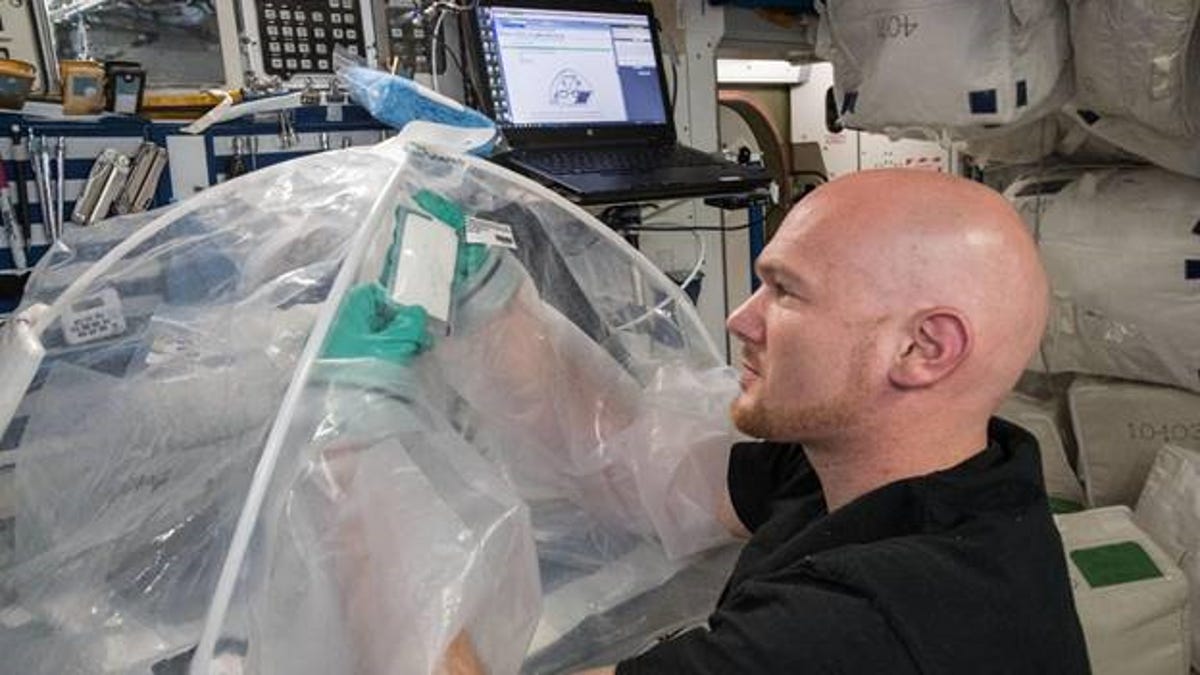Astronauts make cement in space for the first time
Concrete could provide humans in space with better protection from radiation and extreme temperatures than many other materials.

European Space Agency astronaut Alexander Gerst works on an experiment aboard the International Space Station looking into how cement reacts in space.
In the future, when humans live in and visit space, they're going to need places to stay and work. That calls for durable infrastructure such as concrete. For the first time, astronauts made cement in space as part of a project looking into the effects of microgravity, NASA said last week.
Concrete is made by combining sand, gravel, rocks and paste made from water and cement powder. It could be a good material to use in space because it's strong and would offer better protection from extreme temperatures and radiation than many other materials, according to a study published earlier this year. It could also be made with materials available in space, such as dust on the moon. That means we wouldn't have to bring construction materials to the moon or Mars, effectively cutting back on costs.
Scientists are looking into how changes in gravity could impact the process of making concrete and how it behaves. Some of the questions they're looking to answer are how concrete will harden in space and what the microstructure will be.
An investigation on the International Space Station looked at how cement solidifies in space to better understand the process and potential differences. A project called Microgravity Investigation of Cement Solidification examined whether solidifying cement in microgravity would lead to unique microstructures. It also provided a base for comparing cement samples processed in space versus on Earth.
Researchers found samples processed on the space station showed significant changes in the cement microstructure when compared to samples from Earth. One of the biggest differences was that there were more open spaces. That could have an effect on the material's strength, but scientists still have to measure the strength of the cement made in space.
"Even though concrete has been used for so long on Earth, we still don't necessarily understand all the aspects of the hydration process," Aleksandra Radlinska, principal investigator from Pennsylvania State University, said in a release. "Now we know there are some differences between Earth- and space-based systems and we can examine those differences to see which ones are beneficial and which ones are detrimental to using this material in space."
The microgravity environment of the space station helps to simulate gravity levels on the moon and Mars, offering a peek at how cement could form there. Scientists are currently evaluating cement samples containing simulated lunar particles processed at various gravity levels.
The finding that concrete can harden and develop in space brings us one giant leap closer to potentially building structures on the moon using native materials.
"We confirmed the hypothesis that this can be done," Radlinska said. "Now we can take next steps to find binders that are specific for space and for variable levels of gravity, from zero g to Mars g and in between."

